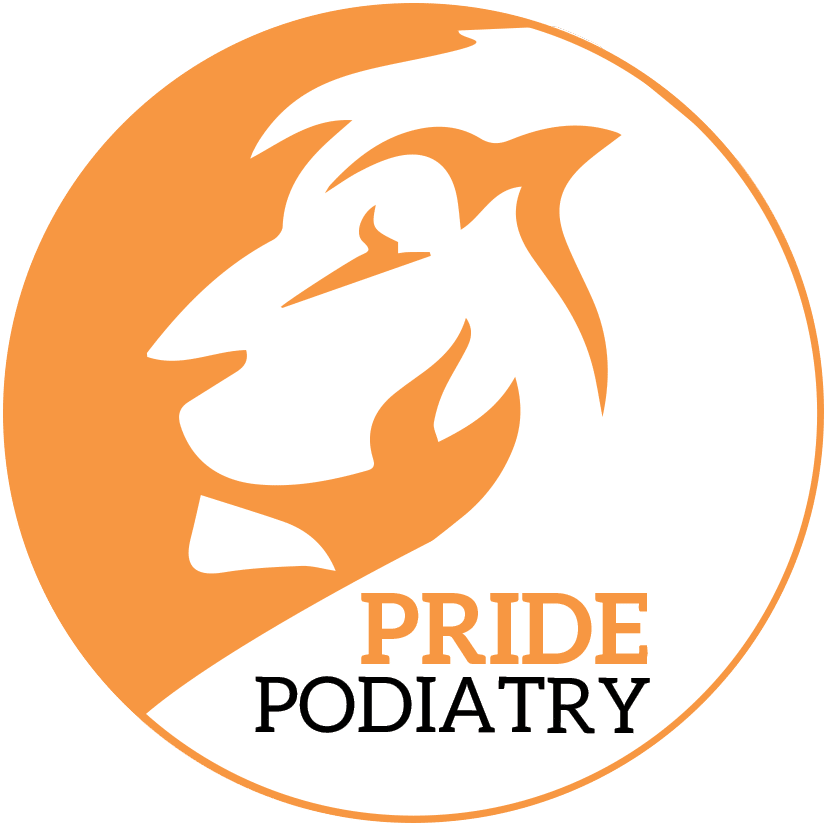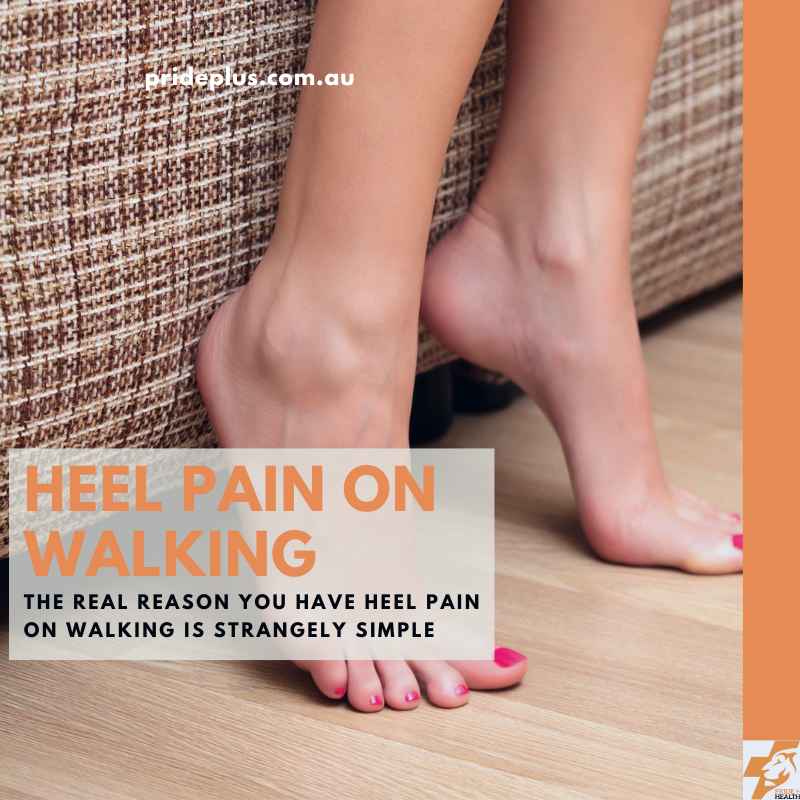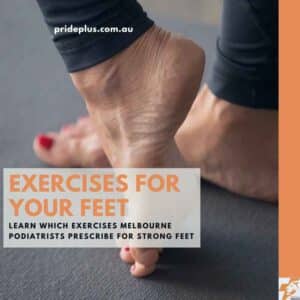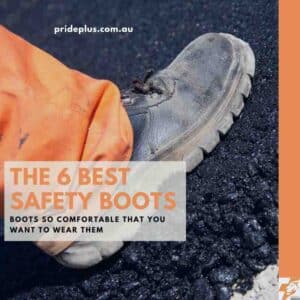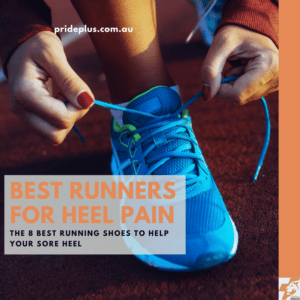Heel pain on walking, particularly that first step in the morning is caused by a heel spur.
That’s what your doctor said. And why shouldn’t they, look there at the X-ray of your foot they took. It’s clear, there’s a heel spur on the image and it’s smack in the middle of where you feel your heel pain on walking in the morning.
Sorry Doc, that’s not it.
The real reason is strangely simple, and comforting to know (and treat) as well.
Heel Pain On Walking Is A Soft Tissue Issue
That heel pain you feel when you first get up in the morning, it starts to feel a bit better after a few steps doesn’t it?
For some, it might even go away completely. Only to return as a sharp painful sensation when you get up the next morning or rest for too long on the couch.
So what is happening?
If it was the heel spur that was so clearly evident on your X-ray, do you think it would just go away like that? Do your bones “warm up” (like your parents’ old Holden) and feel better after you’ve been on them for a time?
Of course not.
You know it, your bones know it. And now, with more up to date research and assessment your podiatrists know it as well.
Your heel pain on walking is a soft tissue injury that can be effectively treated by optimising the load and increasing it’s capacity.
Say it with me.
Rehabilitation and optimisation.
Rehabilitation & Load Optimisation For Heel Pain On Walking
Here’s how you get started on the rehabilitation and load optimisation treatments for your heel pain on walking.
You’ll do best here if you have a personalised plan specifically tailored to you and your exact causes and factors for while you have heel pain.
To get your own treatment plan, book in with your podiatrist at any of our clinics. We love helping you go from sore heels to happy feet. Painfully limping those first few steps to prancing out of your chair with confidence.
But what can you do before you see your podiatrist?
Jump onto these three actionable tips to start your journey.
Tip #1: Shoe Optimisation
Have you noticed how when you wear some shoes your heel pain feels a little better the next morning, and others make it feel worse?
Most do, but not all.
For those of you who absolutely have to wear the same shoes each day for work (yeah looking at you tradies in your workboots) you might not have noticed this pattern. But for those who do get to vary the shoes we wear for work, school and play we often find that some feel better than others.
You should wear a shoe that supports your heel pain on walking as much as you can. We’ve a list of shoes for you to consider as well as what to look for in a shoe for heel pain.
Tip #2: Strap It
When you have heel pain on walking your soft tissues have been put under more stress than they can handle.
So why not make something else, like strapping tape take up some of that stress?
In this video your podiatrist shows you the simplest way (it only uses 4 little pieces of tape) to strap your foot to reduce the peak stresses on your heel.
Tip #3: Forget Stretching, Strengthen and Lengthen
Don’t waste your precious time trying to stretch away your heel pain.
It might feel better in the moment, but you’ll be back there the next morning, square one. Sore heel.
To increase the capacity of your soft tissues around your heel your body needs to go through a process called sarcomerogenesis. Big word! It means to get a muscle long and strong.
The basis for this with heel pain on walking is using the calf raise.
You do need to find the sweet spot for you. It’s like going to the gym and having your personal trainer find the exact right weight for you to lift.
Your podiatrist will do this in person but an example of easy to hard (light to heavy) calf raise exercise progression looks like this.
Easy Calf Raises
- Standing on both feet
- Ball of feet on a step, heels hanging free
- Slowly rise onto toes, hold, lower
- Repeat.
Medium Calf Raises
- Standing on one foot at a time
- Hold onto a solid surface with your hands for balance
- Ball of your foot on a step, heel hanging free
- Slowly rise onto toes, hold, lower
- Repeat.
Hard Calf Raises
- Standing on one foot at a time
- Don’t touch anything with your hands for balance (hands free)
- Ball of your foot on a step, heel hanging free
- Slowly rise onto toes, hold, lower
- Repeat.
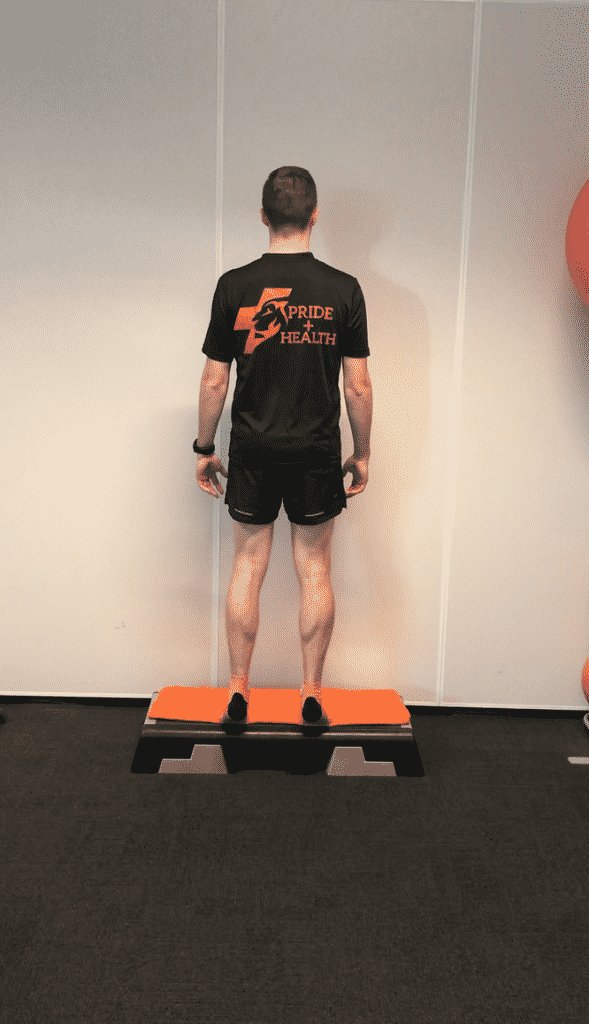
There’s danger in doing too much, and danger in doing too little. You don’t want to overwork an overworked soft tissue without optimising load as well.
But if you have heel pain on walking, you now know what you need to do.
Start with your podiatry appointment and begin making changes to optimise load and increase the capacity of your soft tissues.
Oh, and no need to worry about the heel spur on your X-ray. Just like when your heel warms up and feels good you’ll soon be living your active life without heel pain and that heel spur will just be like a wrinkle on your skin… Sure, you weren’t born with that wrinkle but it’s not actually causing you painful problems on a day to day basis.
Before You Go
We’re passionate about helping people just like you who have heel pain on walking. If you’re reading this from further away than our Melbourne clinics then check out the following.
- Free online heel pain test where you can investigate what type of heel pain you have.
- How shockwave therapy can help rehabilitate and build soft tissue capacity.
- What to do instead of using a spiky ball for massage.
So how do you feel now? Is it a relief to know you don’t have to worry about doing anything serious to that little wrinkle of a heel spur? Do you feel confident that you know what to do and who to see to help you with your heel pain?
I hope so.
Because, let me tell you, I too know what heel pain feels like in the morning.
About the Author

Melbourne podiatrist Tim Mulholland suffered with heel pain on walking too. He’s not too proud to admit that even though he’s a podiatrist with well over 10 years treating sore feet, a rapid increase in running volume (and getting on in years) did him in. So you can be confident that Tim will sit empathetically with you and help you work out what you need to do to overcome your heel pain too.
Frequently Asked Questions
The most common symptom of heel pain is a sharp, stabbing sensation like you’re standing on a pebble when you first pop your feet on the ground. There’s also often stiffness and an ache that tends to linger for a few paces but can warm up and feel better for a while.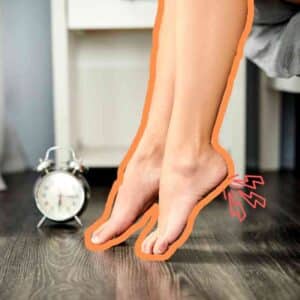
Your podiatrist will use a combination of clinical tests, walking tests, a thorough history and in some cases, imaging to diagnose your heel pain.
There’s a number of risk factors for heel pain including flat feet but also high arched feet. Highly active as well as sedentary people can all get heel pain too. Some medical conditions such as diabetes can also increase your risk of heel pain on walking too.
If you have your heel pain diagnosed and treated with your podiatrist your prognosis is very good. Depending on the treatment and the severity you can expect to start feeling improvements in the short term whilst you work on your rehabilitation exercises over weeks to months.
